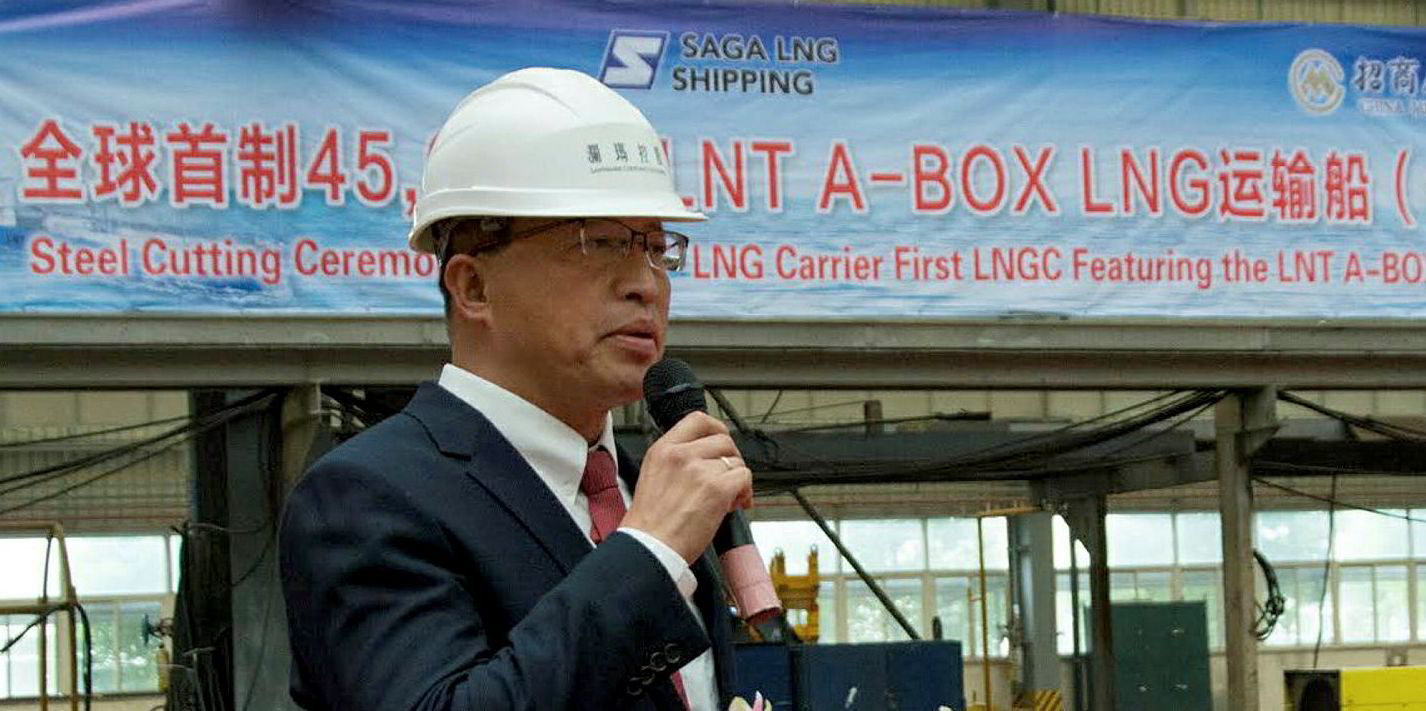Saga LNG Shipping is planning to invest around $500m in a fleet of medium and small LNG carriers for an import and distribution project along the length of the Yangtze River.
The plan starts with two ships of 80,000 cbm to lift LNG in Southeast Asia and supply three terminals on the lower Yangtze River below Nanjing, where air draft limitations will stop them from proceeding further upriver.
A memorandum covering two firm ships and two options was signed on Tuesday.
Like a smaller prototype soon to be delivered, the new vessels will be built at the Jiangsu branch of China Merchants Heavy Industry (CMHI) Jiangsu yard at Haimen.
The 80,000-cbm ships would follow the same design concept as the 45,000-cbm prototype, but with four 20,000-cbm tanks instead of three of 15,000 cbm.
The undisclosed charterer is said to be a Chinese publicly listed energy company.
The 80,000-cbm import vessels are set to be followed by four ships of 28,500 cbm for inland distribution upriver as far as Wuhan, and two 12,000-cbm ships of just four metre draft capable of trading all the way to Yueyang near the Three Gorges Dam.
But the Yangtze River import and distribution project is ultimately expected to need more vessels in all three size slots.
The price of the 80,000-cbm ships that make up the initial order has yet to be agreed. But sources close to Saga say they are negotiating with the shipyard to bring it down from a working estimate in the neighbourhood of $100m per ship.
Saga, controlled by David Wu through his Sino-Norwegian shipfinance boutique Landmark Capital, holds the rights to its own LNT A-Box ship design.
It involves building a containment system separately from the ship and inserting it during construction or conversion.
Saga's 45,000-cbm ship, set for sea trials in December and gas trials in January 2019, is the world's first on the LNT A-Box design.
Another option is to be exercised six months after delivery from CMHI.
But that option could be converted into an 80,000-cbm ship, which sources close to Saga say is proving more popular with potential charterers.



